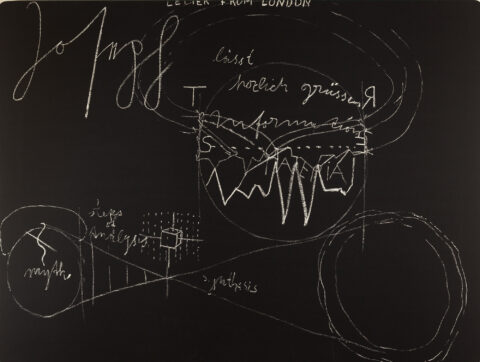
Upper Bavarian landscape with cows and shepherdesses
Details
Nicht bei Wichmann.
Provenienz:
Seit Jahrzehnten in Privatbesitz, Sachsen.
Description
Like Heinrich von Bürkel, Wilhelm von Kobell combined the genres of genre and landscape in Bavaria, making the view of the Bavarian Alps the backdrop for his observation of the rural population and their activities. While Bürkel used forges in the wintry Alps or brawls in inns as his motifs, Kobell made peaceful rural life and the activities of the country folk in the Bavarian mountains his subject.
A few cows are grazing on a plateau-like foreground stage and behind them a flock of sheep, on the left is a dairymaid with a rake in traditional Tegernsee costume, in front of her sits a girl tying flowers with her back to the viewer. It could be a mother and child taking a short break – but do they really belong together? We don’t know, in their almost doll-like appearance they have no real contact, appear strangely isolated and isolated, as if “transferred” from another context into the landscape.
In fact, Kobell repeatedly used, varied and rearranged figures and groups of figures he had once found against the backdrop of the Bavarian Alps in his paintings and watercolours – for example, he used the group of cows literally in a watercolour painted around 1830, which shows the view of Lake Starnberg from the heights (Schweinfurt, Museum Georg Schäfer, Inv.No. MGS 1100A, cf. Wichmann 1477), and the seated flower child can be found in two other works by Kobell depicting peasant girls tying bouquets (Wichmann 1091 and 1494).
This type of pictorial composition testifies to a rationalised process that is not only limited to the figures – the presentation and view also follow a once-invented pictorial strategy: Kobell’s combination of a close-up view in the foreground and a distant view of the silhouette of the Bavarian Alps is characteristic. In the foreground, the plateau extends into the mountains in a semi-circle, the meadows form individual “islands”, which are assigned to cattle and figures; set off from this, behind a valley, is the backdrop of the staggered mountains, over which the blue of the sky is increasingly superimposed towards the back.
It is this timeless tranquillity, the glimpse of a peaceful, unspoilt mountain world, that makes Kobell’s paintings so popular with the public to this day. The staging of the juxtaposition of “detailed realism” in the foreground and atmospheric appearances in the background, of proximity, in which the details are recognisable, to a distance, in which mountains and sky are aligned, is characteristic of Kobell’s pictorial world. It is this special mixture of detailed observation of nature and atmospheric soulfulness, the loving attention to the subject, with which Kobell’s landscapes met the taste of his audience and created an image of the Bavarian mountains that continues to have an effect today.
Dr Peter Prange
* All results incl. buyer’s premium (27%) without VAT. No guarantee, subject to error.
** All post-auction prices excl. buyer's premium and VAT. No guarantee, subject to error.
*** Conditional Sale: The bid was accepted below the limit. Acquisition of the work may still be possible in our post-auction sale.
R = regular taxation
N = differential taxation on works of art which originate from a country outside of the EU
The private or commercial use of images shown on this Website, in particular through duplication or dissemination, is not permitted. All rights reserved.
Recently viewed



